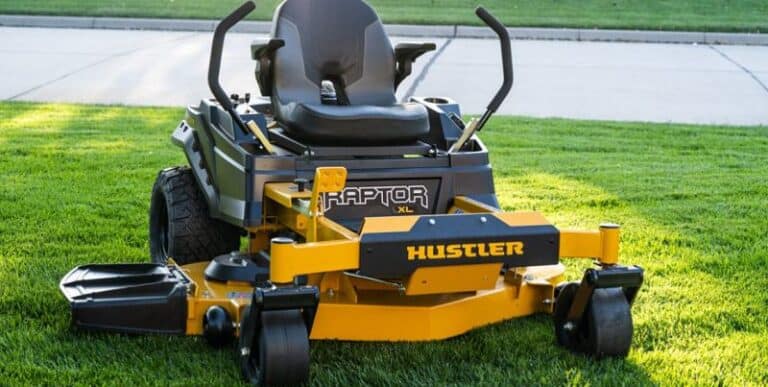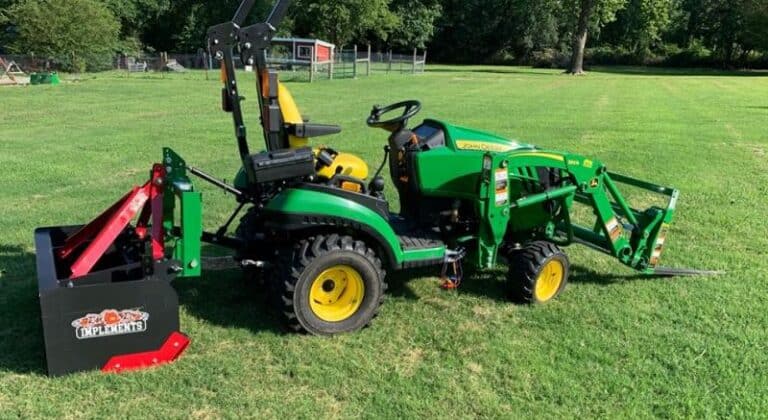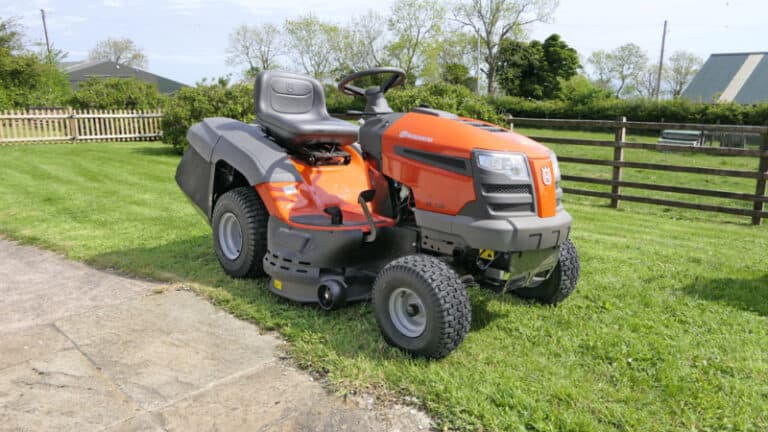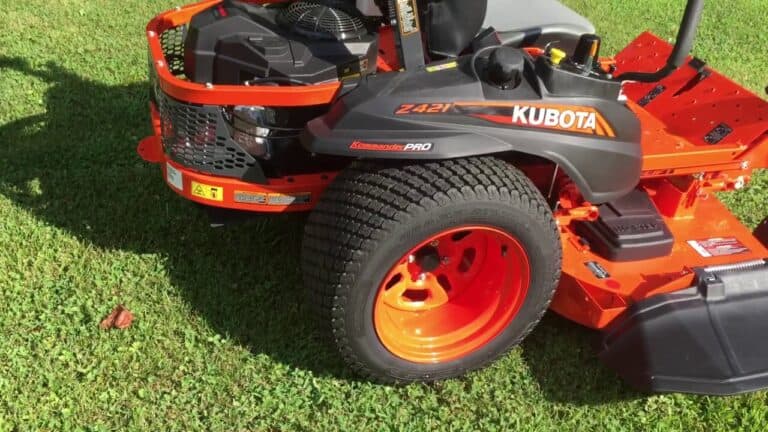The Best Way to Fix Lawn Striping After Fertilizing
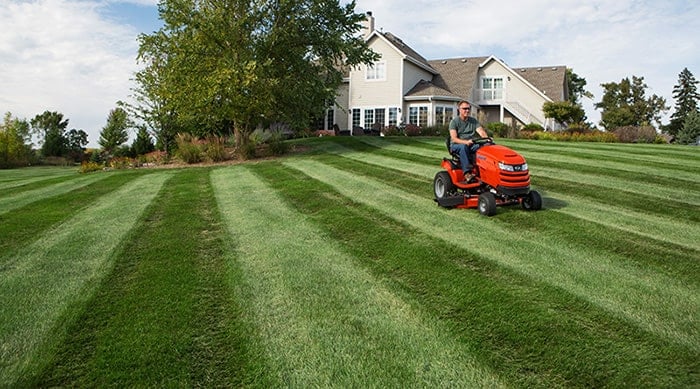
If you’re not familiar with lawn striping, it’s a condition that develops on your lawn when it has been over-fertilized, or when too much water has been sprayed on it after a dry day. Lawn striping will cause your grass to clump up and grow in noticeable patches that give an uneven look to the lawn.
It’s somewhat unattractive, and it also prevents you from mowing the lawn evenly. In some extreme cases, it might also cause a certain amount of damage to your mower blades. When you have bare spots on your lawn, they should be raked out and allowed to rest for a few days before applying fertilizer again.
If you have an area that you suspect has had too much fertilizer applied already, use a rake to remove it or to redistribute the excess fertilizer. According to DIY Quickly, the tips and tricks below will help you to recover your lawn from the striping which occurs after fertilizer has been applied.
Aerate the lawn
Aerating will go a long way toward removing excess thatch, and it will allow the soil under your grass to be more receptive to water. It will also tend to correct lawn striping from fertilizer, as well as any other issues you might have. Your grass will then grow in healthier, and it will have stronger roots that can help it survive difficult conditions.
Mow off lawn striping
If your lawn striping from fertilizer has grown too tall, one of the best things you can do is to mow it a bit shorter so that thatch doesn’t have a chance to build up. However, when you’re trimming, be sure not to mow off more than an inch at a time, because this can cut off healthy grass as well as the striped grass.
Use less water
It will help if you water your lawn a little less frequently, because that will cause it to thin out and to grow a little lighter. It will also allow for some corrections to take place from striping or other issues that might be bothering your lawn. Be careful to only do this as a short-term solution, because if you consistently use less water on your lawn over a prolonged period, it could cause the grass to brown up or to become very dry.
Adjust your lawn fertilizer
Sometimes, simply adjusting your lawn fertilizer will fix lawn striping, and its related issues. If your grass is growing in too dark, it’s a good idea to adjust the nitrogen levels, but only for a week or two. You can use the same approach if your grass is growing greener than you prefer to have it.
Remove thatch
One of the best things you can do to correct lawn striping is to remove any buildup of thatch. Thatch is a layer of dead grass which is typically situated between the soil and the actual green grass growing at the surface. Thatch can cause brown spots to appear, and it can also trigger some health issues for your lawn, such as broadleaf weed issues and watering problems. By removing the thatch altogether, your lawn will become much healthier and much better able to withstand any seasonal issues.
Remove dead grass
When you remove dead grass from your lawn, it will also eliminate any of the brown patches that have accumulated on your lawn. These brown patches tend to form when certain parts of your lawn have a lack of water or fertilizer. Raking up the dead grass or mowing it will kill it, and that will allow it to be picked up at a later time.
Rake up leaves
When you get rid of all the leaves on your lawn, it can help correct lawn striping as well as a number of other issues. By removing all the leaves from your lawn, that will also help removing a buildup of patch, and that can cause lawn striping from fertilizer as well as some other issues.
Do some rototilling
When you rototill your lawn, that will eliminate any build-up of thatch, which is one of the main causes of brown spots and striping on your lawn. It will also do a really good job of aerating the soil, which will create better drainage and encourage your grass to develop a much healthier root system.
Re-seed your lawn
By re-seeding your lawn, you’ll eliminate whatever dead grass may have developed, and this will also be fairly effective at removing any lawn striping you might have. This is a really good solution for a temporary problem, because it can be somewhat difficult to seed your lawn at exactly the right time, especially if you don’t have the right seed for the season.
Wait till next year
If you live in a cold section of the country where winter tends to kill off just about everything including your lawn grass, then it’s probably better for you to wait until spring to try and address your lawn striping issue. This is a good strategy to adopt when you have a temporary problem, and you know you’ll have time to fix it before your lawn begins to regrow next season.
Avoiding fertilizing errors
When you’re applying fertilizer to your lawn, it’s very important to be aware of the possibility of lawn striping. When you have to fix lawn striping, it’s mostly because there has been an uneven distribution of fertilizer which is usually rich in nitrogen, all across your yard. It usually takes one or two days for most types of grass to react to any fertilizer which has been distributed on it.
Nitrogen fertilizers are necessary in order to maintain a healthy lawn, but over-fertilizing can certainly cause some significant damage to your lawn. Lawn striping will occur when fertilizer is applied in concentrations that are different from one area to the next. This might happen as a result of a problem with your broadcast spreader, or you may have had an uneven distribution because you stopped in one or two places too long.
Any of these occurrences can cause excessive fertilizer to be applied in one spot, and that’s what will generally trigger lawn striping. When you have uneven fertilization on your lawn, it will generally result in having more fertilizer applied in some spots, and that in turn will lead to lawn striping and possibly other issues as well.
It’s also possible for lawn striping to be caused by water exposure and soil type. Some types of sandy soils lose nutrients quickly, whereas soils comprised mostly of clay will tend to hold nutrients for better distribution across your entire lawn. Water exposure can have a big impact on how frequently your grass needs to be fertilized as well.
Do lawn fertilizer stripes fade away?
On a lawn that’s fairly well-established, it’s pretty easy to see where you’ve been fertilizing, because you’ll notice that the grass is always greener in those spots than in other areas. In addition, there are very often visible stripes associated with the patches of extra fertilization. On a lawn that has been newly seeded, you might find light-colored patches that resemble fertilizer stripes.
These spots will disappear as the grass gets more mature and begins to grow. If you see signs of fertilizer striping on your seeded lawn, it probably means that the soil was excessively dry either while it was being seeded or in the immediate aftermath of seeding.
In order to overcome this possibility, make sure to water deeply after each seeding, so that the fertilizer will be able to leach into the ground and find the roots of your grass plants. This is much better than fertilizing for a few weeks while your grass tries to establish its roots.
Why does my lawn stripe after fertilizing?
When fertilizer is not applied evenly to a lawn, striping can occur. This happens most often when you apply fertilizer in rows, and lines will occur because some spots are missing fertilizer while other spots have excessive fertilizer.
How can I repair my lawn after striping?
According to Inside the Yard, one of the best ways to fix lawn striping is to fertilize in the opposite direction. Thus, if you originally fertilized in a north-south direction, you should re-fertilize in an east-west direction. If your lawn has been damaged by a fertilizer burn, you’ll need to water it regularly for a week or so, and the burn should disappear.


